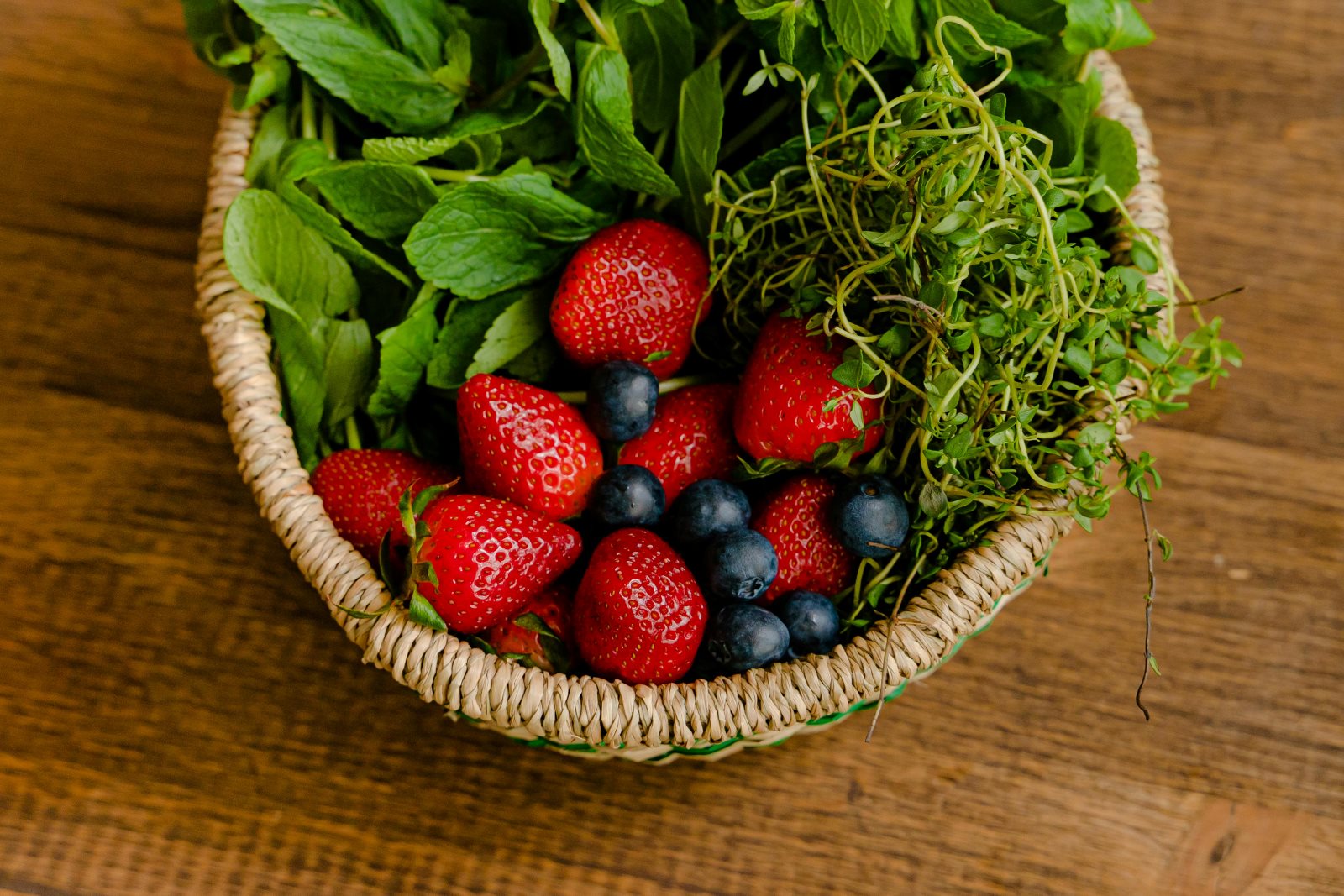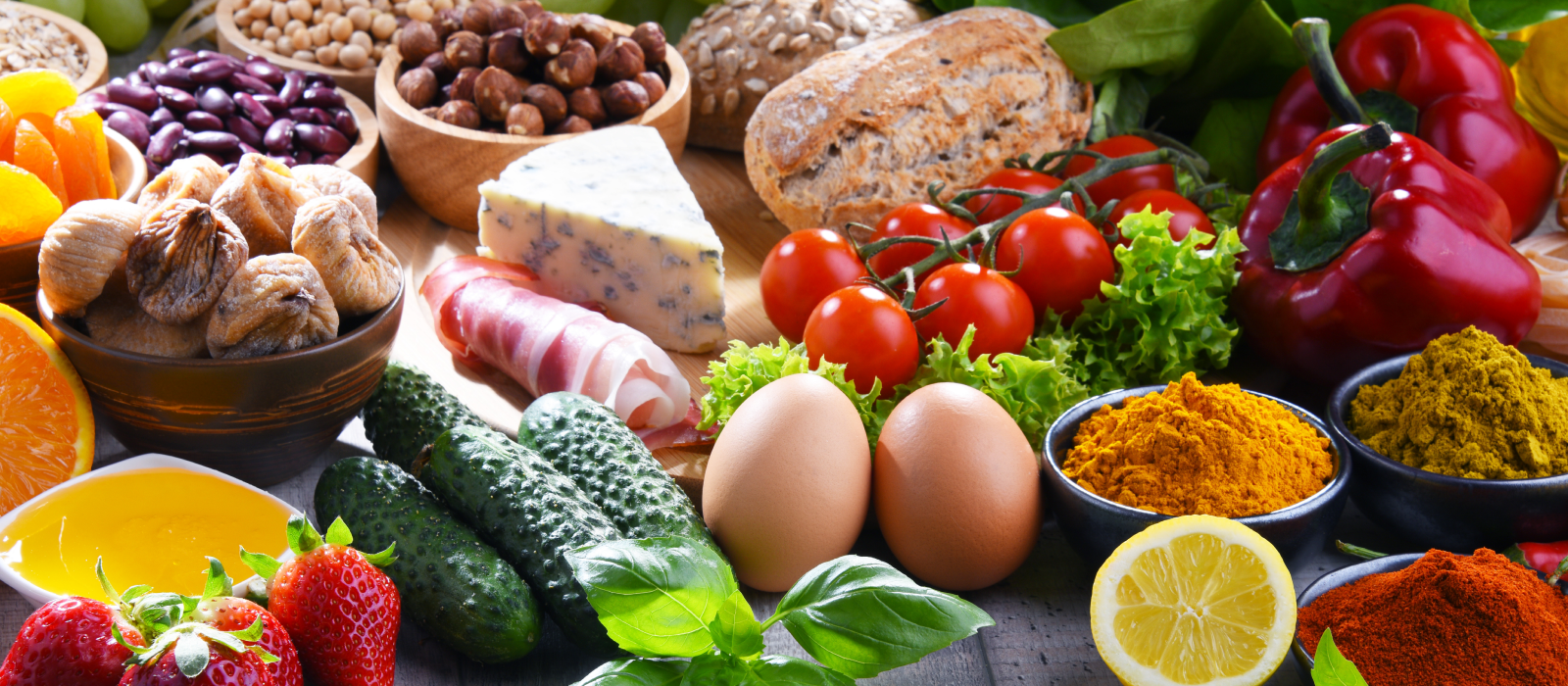
March is National Nutrition Month®
National Nutrition Month® is an annual nutrition education campaign sponsored by the Academy of Nutrition and Dietetics celebrated every March. This year’s theme is Food Connects Us. Food connects us in several ways: food connects us to our health, to different cultures, and to our friends and family throughout every stage of life.
Food connects us to our health because the food we eat provides the energy and nutrients our bodies need to function. Eating in a healthy way can help you live longer, prevent chronic diseases like heart disease, cancer, and diabetes, and support a healthy immune system. As you get older, physiological changes that occur with aging and lifestyle factors can affect your nutrient needs.
Follow these tips to build a healthy eating plan as you age:
1. Eat plenty of fruits and vegetables. Fill half of your plate with a variety of high-fiber, nutrient-rich fruits and vegetables. Fresh, frozen, canned, and dried options can all fit into your plan. Rinse canned vegetables before use to reduce the sodium content. Choose frozen vegetables without added seasonings or sauces. Look for fruits with no added sugar when buying canned or dried.
2. Make at least half of your grains whole grains. Choose 100% whole grain breads, cereals, crackers, and pastas most of the time. Oats, whole grain tortillas, and brown rice are good choices too. Look for fiber-rich cereals fortified with vitamin B12 since the absorption of B12 decreases with age and with certain medications. The increased fiber intake will help keep you regular and make you feel fuller at meals.
3. Since we need more calcium and vitamin D as we get older, try to incorporate low-fat dairy products into your eating plan. If you don’t tolerate lactose, look for calcium-fortified, non-dairy options like soy milk.
4. Try a greater variety of protein sources. Lean meat and poultry are good choices along with eggs, seafood, nuts, seeds, lentils, and legumes. Eat protein throughout the day at each meal and snack. This improves protein absorption and makes you feel more satisfied.
5. Limit the sodium, saturated fat, and sugar you eat each day. Packaged and canned foods tend to be high in sodium, so be sure to read labels. Try using sodium-free seasonings when you prepare food at home. Saturated fats are found in tropical oils and foods of animal origin. Try choosing lower-fat cuts of meat and limiting intake of processed meats. When it comes to sugar, watch your added sugar intake, and instead enjoy foods that are naturally sweet like fruit.
6. Stay well-hydrated. As we age, our thirst mechanism is less reliable. Drink fluids throughout the day and remember that water is the best choice. Add sliced lemon, lime, or orange to boost the flavor of your water.
7. Try cooking more at home so you have better control over what is in your food. Remember to enjoy your food and be mindful when eating.
Food can connect us to culture in many ways:
• Food is a window into the history and culture of a community.
• Recipes passed down through generations can tell stories of the past.
• The way food is prepared can reflect rich traditions.
• Specific ingredients can sometimes represent cultural values.
• The sights, smells, and tastes of foods can stir memories and encourage connections.
Food is an important part of gathering for family meals, holidays, ceremonies, and celebrations. Sharing a meal with friends and family is another way we connect with food. The connection may start with learning where the ingredients come from. Are they from your own garden, grown locally, or from a farmer’s market, and, if not, where are they from? Another source of connection is where your recipe comes from. Maybe it’s a family recipe or a new recipe that’s being tried for the first time. Celebrations often revolve around which foods are served and how they are prepared. There is a special connection that comes from sharing food together.
Try this tasty side dish recipe using fresh spring vegetables.
Spring Vegetable Sauté
Yield 4 servings
From snaped.fns.usda.gov
Ingredients
1 teaspoon olive oil
1/2 cup sweet onion (sliced)
1 garlic clove (finely chopped)
3 new potatoes (tiny, quartered)
3/4 cup carrot (sliced)
3/4 cup asparagus pieces
3/4 cup sugar snap peas, or green beans
1/2 cup radishes (quartered)
1/4 teaspoon salt
1/4 teaspoon black pepper
1/2 teaspoon dill (dried)
Directions
1. Heat the oil in a skillet. Cook the onion 2 minutes, add the garlic and cook another minute.
2. Stir in the potatoes and carrots. Cover, turn the heat to low, and cook until almost tender, about 4 minutes.
3. If the vegetables start to brown, add a Tablespoon or 2 of water.
4. Now add the asparagus, peas, radishes, salt, pepper, and dill. Cook, stirring often, until just tender – about 4 minutes more.
5. Serve immediately.



